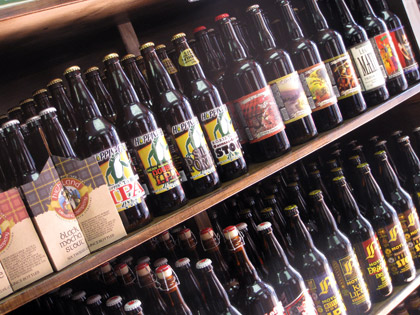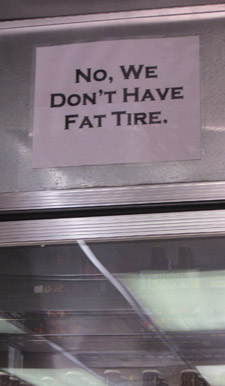
 Do you think you know where in the beer world these photos were taken?
Do you think you know where in the beer world these photos were taken?
Please leave your answer at a comment.
Hint: The photo on the right. Yes, you can figure they don’t sell New Belgium’s Fat Tire Amber Ale because it’s not available to them. Not because they don’t want to.
Bonus hint (since last week there wasn’t a single guess, wild and crazy or otherwise): Don’t go here looking for any Anheuser-Busch, Miller or Coors beers here. Or even some of the other beers generally available in local grocery stores.
Last week’s answer: The photo was taken at the National Brewery Museum in Potosi, Wis., that opened last summer. Worth your time.
Answer added March 8: Owners Scott Shor and Rich Carley opened The Charleston Beer Exchange only a few months ago. The rather small store is packed with only specialty beers. They also have six draft lines to fill growlers, often rare beers that may not otherwise be available in Charleston. There’s a list on their blog.
 In this case he means diacetyl must be there at a pretty high level before he notices it. For some, many in fact, drinkers tolerance means they consider diacetyl desirable.
In this case he means diacetyl must be there at a pretty high level before he notices it. For some, many in fact, drinkers tolerance means they consider diacetyl desirable.